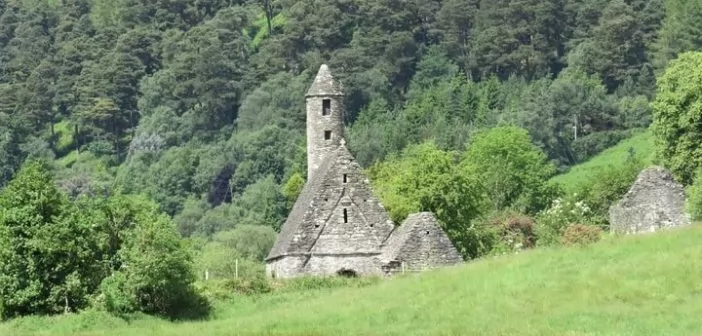HISTORY REMEMBERS the Vikings as warriors who came in state-of-the-art ships and terrified the tribal people of Ireland. These ferocious warriors, who had better weapons than the locals, ravaged our lands, burned our monasteries and enslaved many people.
While there is truth in this image we have of the Vikings, it doesn’t give us the full picture. Certainly, the arrival of the Vikings was a shock to the system in the Ireland of the time. Until then, wars tended to be carried on between clans, and were often limited to cattle raiding. The Vikings were much more brutal – and they were looking for more than cattle.
Challenge to the Status Quo
Our knowledge of the Vikings come from the writings of Irish monks. But it turns out that they had their own agenda to promote. It seems they conducted something of a PR campaign when it came to the Vikings. And since the monks’ writings informed our opinions about the Norse invaders, the pen has indeed proved mightier than the sword over time.
When Vikings first came to our shores in the 790s, the monks had been a powerful force in Ireland for almost 300 years. Monasteries were central hubs of economic and social activity, in the same way as our towns and cities are today. The abbots who ran these monasteries were powerful political figures. They usually had the support of the local nobility and controlled huge tracts of lands. They provided employment and gave alms to the poor.
 Glendalough Monastery in County Wicklow.
Glendalough Monastery in County Wicklow.
Clearly the monks had much to lose in any challenge to the status quo. This wasn’t merely a case of fearsome warriors terrorising the helpless, holy men of the land. This was a power struggle between a privileged, vested interest and an invading force with nothing to lose.
The Monks’ Defence
So how did the monks defend their position? According to Neil Hegarty, the monks “castigated these newcomers for any and every harshness, injury and oppression witnessed in Ireland in these years; and added a variety of satanic flourishes for good effect, presenting the northern onslaught as divine retribution for Ireland’s sinful ways.”
Hegarty points out that the monks didn’t actually write their accounts of the Viking invasions at the time. ‘Cogadh Gaedhil re Gallaibh’ (The War of the Irish and the Foreigners) was actually written some time afterwards, but it came to be seen as an eyewitness account. It was these records that have given us the image of the Vikings that we have today. Hegarty provides an example in his book:
“The whole of Munster became filled with immense floods, and countless sea-vomitings of ships, and boats, and fleets, so that there was not a harbour, nor a landing port, nor a fort, nor a fortress, nor a fastness, in all Munster without fleets of Danes and foreigners…. and they ravaged her kingdoms and her privileged churches, and her sanctuaries; and they rent her shrines and her reliquaries and her books.”
Evidence
They certainly laid it on thick! But according to Hegarty, violence was nothing new to the monks. Ireland’s monasteries were centres of power and wealth, so they had always been involved in conflict. The Vikings activity did, however, represent a step up from the carry-on of the native Irish.
Evidence doesn’t completely support the monks’ accounts, however. In Britain and France during this time, whole monastic settlements disappeared as the Vikings took over lands for themselves. The Irish experience was different. Here, monastic and Viking settlements managed to co-exist. As Hegarty says, “such as state of affairs points to a rather different version of history from that propagated by the Irish monks.”
We shouldn’t completely dismiss the monks’ work. If it wasn’t for their efforts, precious little Irish history would have been recorded in the first place. We should retain a healthy skepticism, however. History is indeed written by the winners.
Article first published on www.oldmooresalmanac.com

